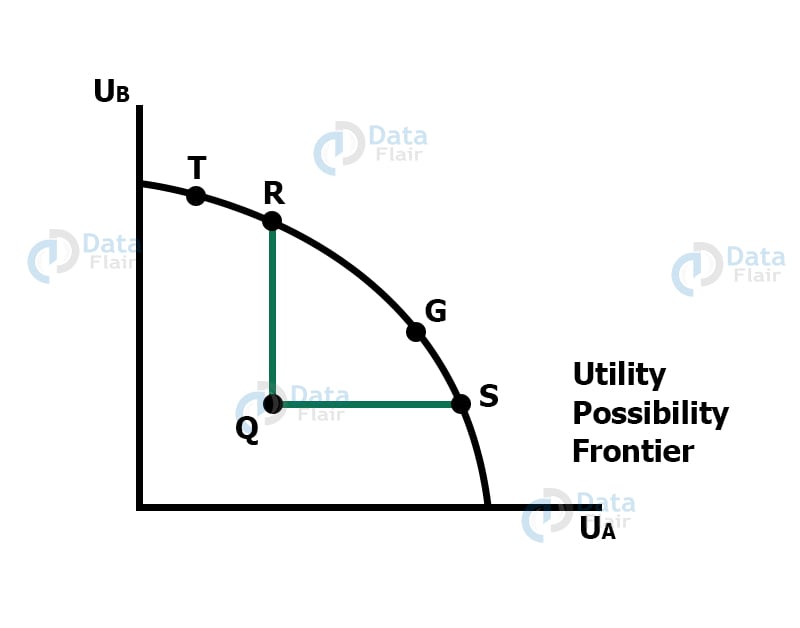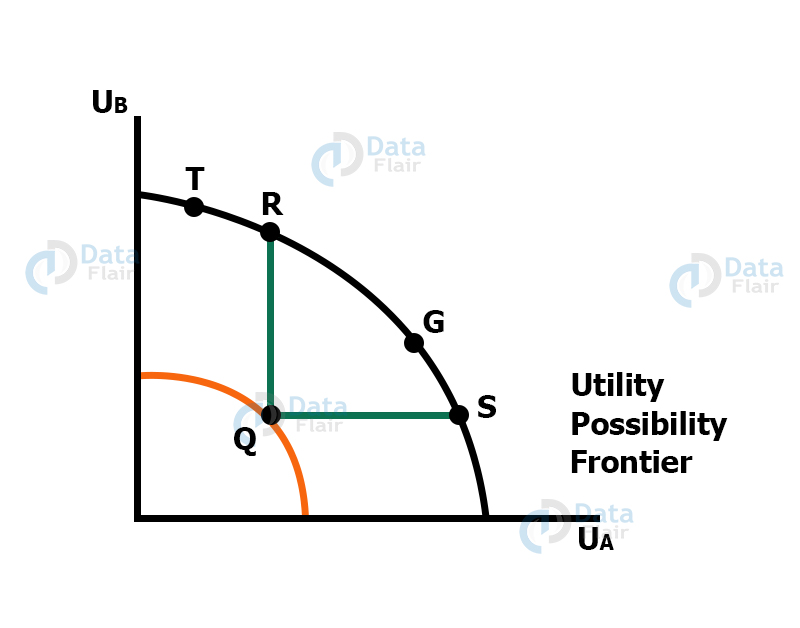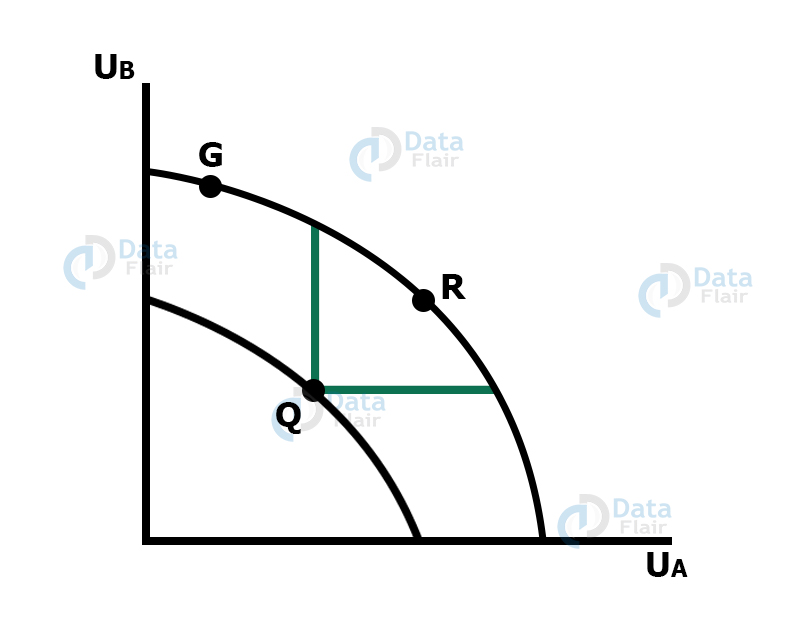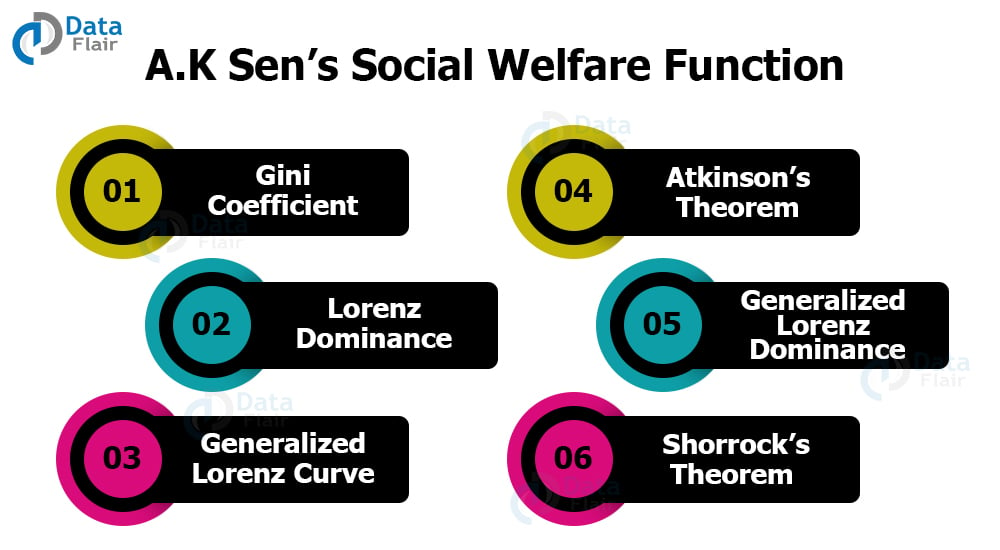Modern Welfare Criteria – Hicks and Kaldor Welfare Criteria, Scitovsky’s Paradox, Arrow’s Impossibility Theorem
Are you ready for UPSC Exam? Check your preparation with Free UPSC Mock Test
This criterion studies the conditions under which the general equilibrium exists. It examines the conditions for economic efficiency in the production of output, exchange of commodities, and equity in distribution.
It further looks upon the optimal allocation of inputs among the commodities and of the commodities among the consumers in the market. Let us learn more about Modern Welfare Criteria.
Modern Welfare Criteria
Hicks and Kaldor Welfare Criteria
The compensation principle of the Hicks and Kaldor Criterion states that “ if a change makes some people better off and the others worse off, then that change will increase the social welfare if those who gain from the change could compensate the losers and still be better off.”
In other words, a change is considered to be an improvement if the losers can not bribe the winners to not bring the change.
Assumptions of Hicks and Kaldor’s Welfare Criteria
- The satisfaction of an individual is independent of other’s opinions.
- In both production or consumption, externalities do not exist.
- The individual’s taste remains constant.
- Ignorance of the issue of distribution.
- Utilities can be measured ordinally for a person.
- Interpersonal comparisons of utility are not possible.
Here, let the initial stage be Q. Now, if a change has been proposed to R then, there will be a change in the utility of B and no change in the utility of A. The movement from Q to R is a Pareto movement.
This further means that a movement of Q to any point between R and S will be a Pareto movement.
Technology is evolving rapidly!
Stay updated with DataFlair on WhatsApp!!
Now if a change is proposed from Q to T, it means that the utility of B will increase and that of A will decrease.
So, this is not a Pareto movement. We would call it to be a Kaldor movement if, in this change, B can compensate A and still be better off. Any movement on UPC from inside the UPC is a Kaldor movement.
However, the Kaldor movement does not require B to compensate A.
Criticism of the Compensation Principle
It is said that the model is not free from the value judgments since the compensation is merely hypothetical. And that it will be labeled as a change even if it makes the poor the poorer.
It is also not free from interpersonal comparisons as well as compensation of a small amount can bring about a large change in the utility of the poor.
However, Kaldor and Hicks claim that they have separated the production changes from the distribution changes.
But, if we say that the output of X increases and the output of Y decreases, and an individual A prefers X and individual B prefers Y, then the question of production becomes interlinked with that of distribution.
Scitovsky’s Paradox
Scitovksy pointed out one of the important contradictions in the Hick-Kaldor criteria. He proved that in some of the cases, a situation A can be shown as Kaldor improvement over the B, and at the same time, B can be shown as the Kaldor’s improvement over A.
In this case, point C is a clear improvement over point B. This happens because UB remains unchanged when UA increases.
However, it is possible to move C to A by a mere redistribution of income. Therefore, B is a Kaldor improvement over A. This is called the Scitovsky’s paradox, which will arise whenever UPC’s intersect.
Scitovsky’s Double Criteria of Improvement
Scitovsky says that a change is an improvement if the winners can bribe off the losers to accept the change. And at the same time, the losers are not able to bribe off the winners to accept the change.
We can see in the figure that, G is a Kaldor improvement over Q. But, this cannot be vice versa.
Samuelson’s Criticism of Scitovsky
In the above graph, S is a Kaldor improvement over Q. It also satisfies Scitovsky’s double criteria. But, Samuelson argues that a full test of improvement in welfare requires that the new UPC shall not lie inside the old UPC at any given point.
Arrow’s Impossibility Theorem
Arrow believed that the principles are defined for social welfare, it is not always necessary for them to hold in the actual situations. Arrow’s impossibility theorem states that ’ a clear order of preferences cannot be determined while adhering to mandatory principles.’
Arrow believes that amongst the following given situations, all of them don’t need to hold in a real market situation. The assumptions are –
- Social welfare function must be transitive.
- Social welfare choice must not change from individual to individual.
- It must be independent of irrelevant alternatives.
A.K Sen’s Social Welfare Function
To study A.K Sen’s Welfare function, one needs to understand some of the basic concepts regarding it. The concepts are as follows –
1. Gini coefficient
A Gini coefficient is the ratio of the area that lies between the Lorenz curve and the diagonal to the area that is below the diagonal.
2. Lorenz Dominance
The Lorenz dominance says that if one Lorenz curve (L1) lies above the other, in some portion and does not lie below the L1. Here, L1 dominates L2.
3. Generalized Lorenz curve
A Lorenz curve is a diagrammatic representation of the relation between the portion of the population and the total income.
4. Atkinson’s Theorem
Atkinson’s theorem says that assuming the income and the preferences are constant, and there is the strict concavity of individual utility functions if a Lorenz curve L1 dominates another Lorenz curve L2, then L1 represents a higher social welfare state.
5. Generalized Lorenz dominance
A generalized Lorenz dominance is when one generalized curve (GL1) lies above another (GL2) and it does not lie below another GL1.
6. Shorrock’s theorem
Following the same preferences as that of Atikson’s theorem, Shorrock’s theorem says that if a generalized Lorenz Curve (GL1) dominates another Generalized Lorenz (GL2) then GL1 represents a higher social welfare state.
The core focus of the capability approach is on what the individuals can do, which is their capability.
According to him, there are five bases on which we can assess the welfare of the individual or the economy. The five bases are –
- The importance of real freedom in the assessment of a person’s advantage.
- Individual differences in the ability to transfer the resources into valuable activities.
- The multivariate nature of the activities giving rise to happiness.
- The balance of materialistic and non – materialistic factors in evaluating human welfare.
- Concern for the distribution of opportunities within society.
Bergson Social Welfare Criteria
Bergson believed that in order to compare the utility levels of the different individuals resulting from changes in the economic policy, it is vital to make the interpersonal comparisons of utility.
In addition to that, he also believed that this comparison of interpersonal utilities should be explicit.
With this, Bergson introduced a social welfare criterion in which he incorporates such as the utility of individual A from Re 1= utility of individual B from Re 0.20.
Discerning such exact judgments or the interpersonal comparisons of utilities, Bergson gives ranking to the alternative social states from the point of view of social welfare.
Along with Samuelson, he developed the concept of social welfare function. It helps in finding out the unique social optimum and provides exact and explicit value judgments.
Summary
The article covered the topic of Modern Welfare Criteria. We talked about what modern welfare means to different economists and how they have defined it through their theorems and diagrammatic representations.
The economists in this article are Hicks and Kaldor, Scitovvsky, Arrow, and Amartya Kumar Sen.
Did you know we work 24x7 to provide you best tutorials
Please encourage us - write a review on Google








